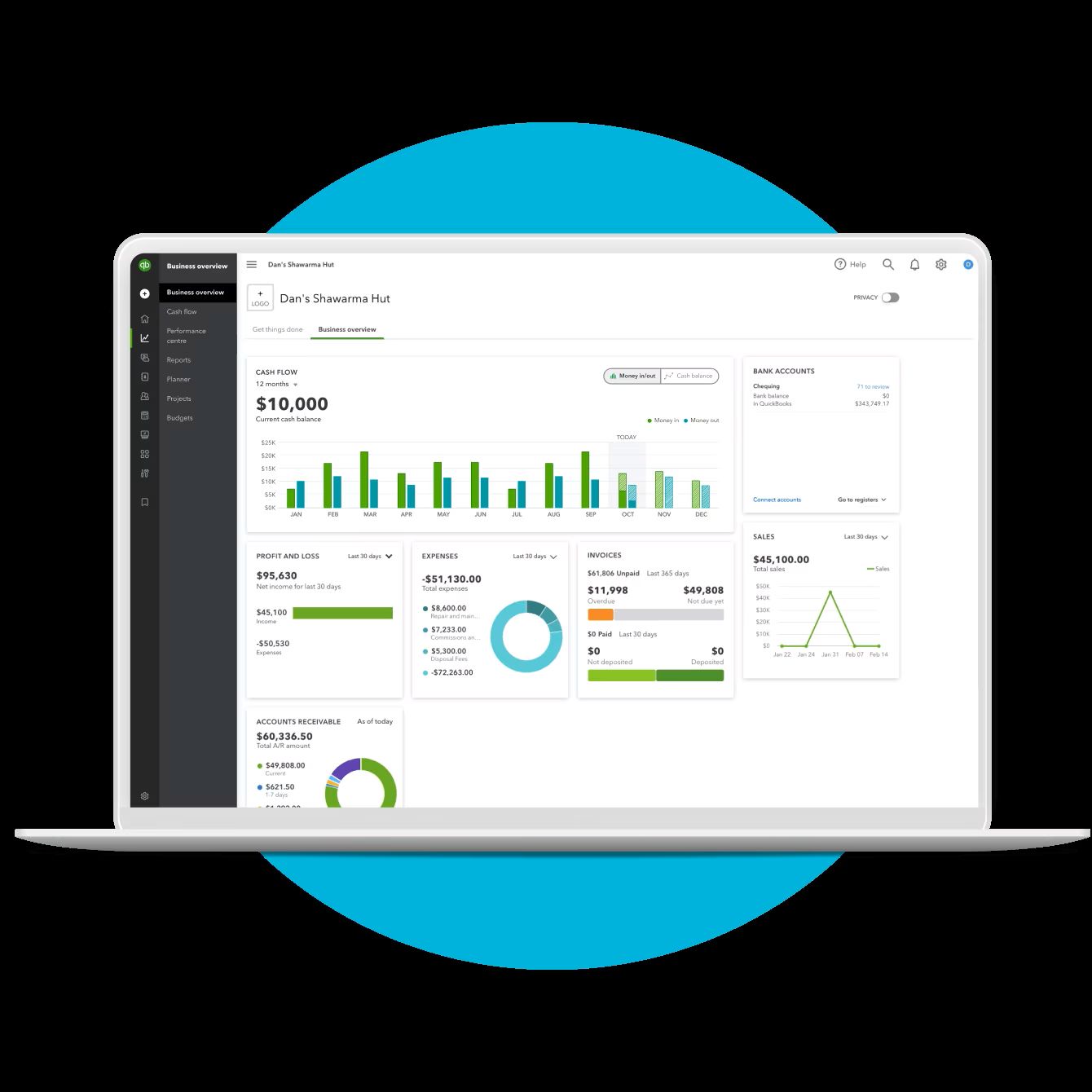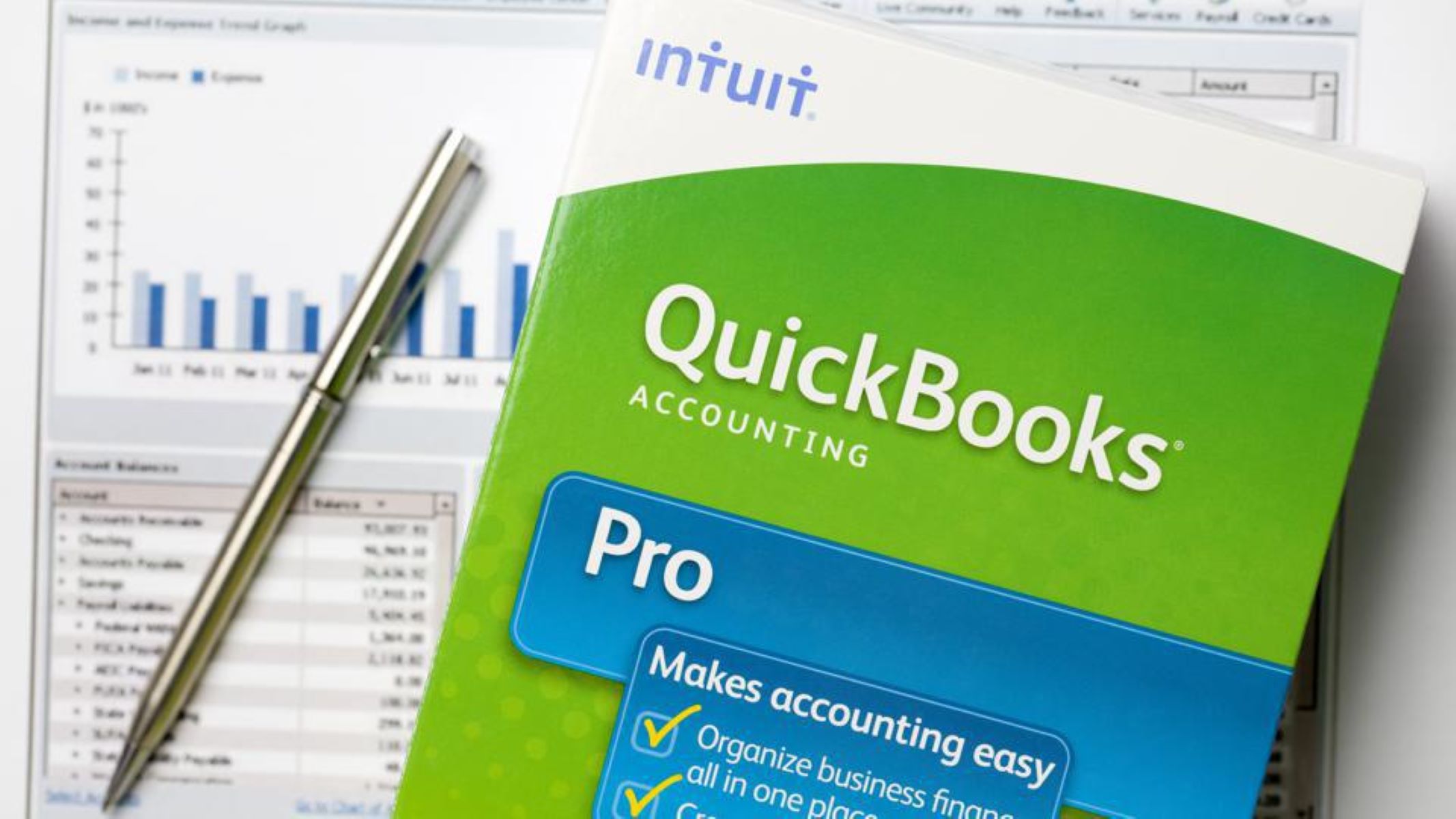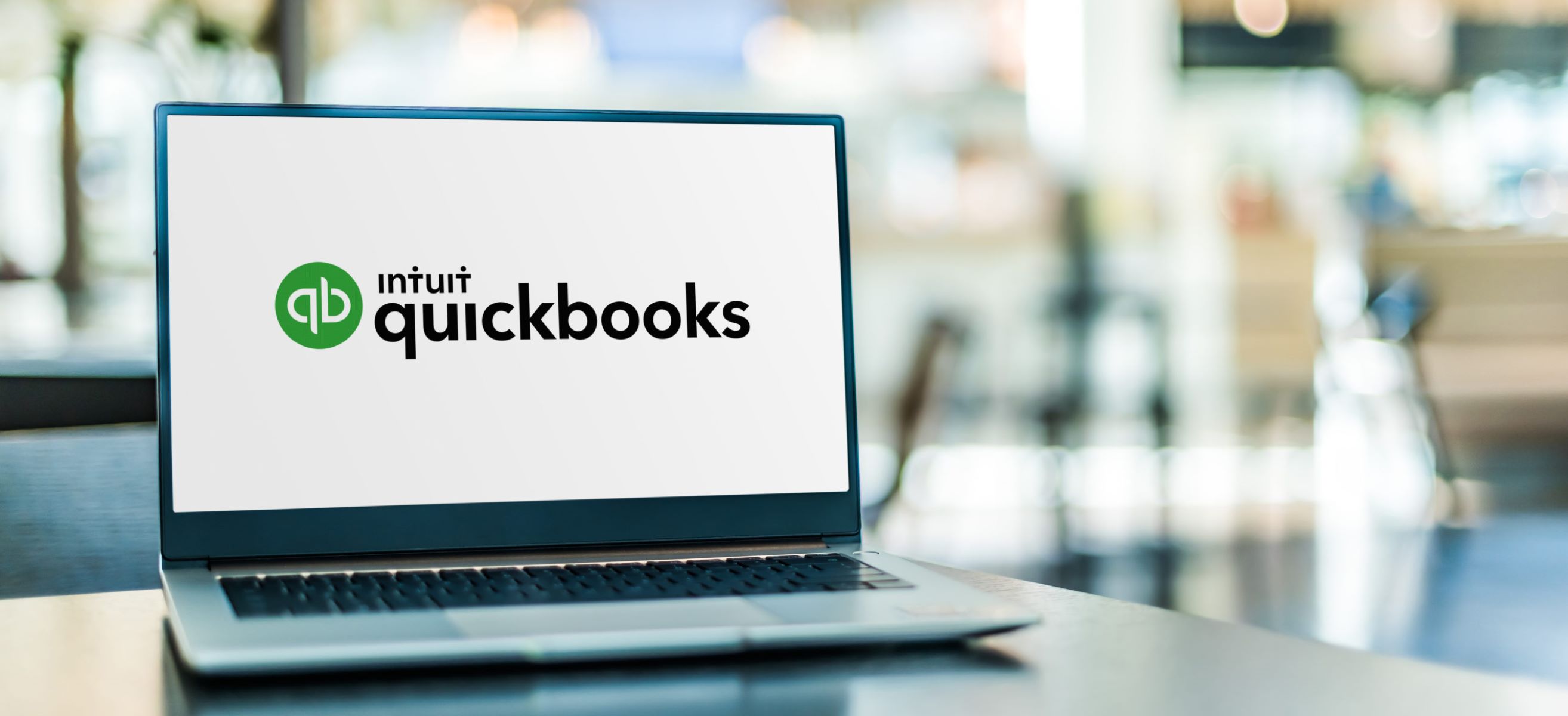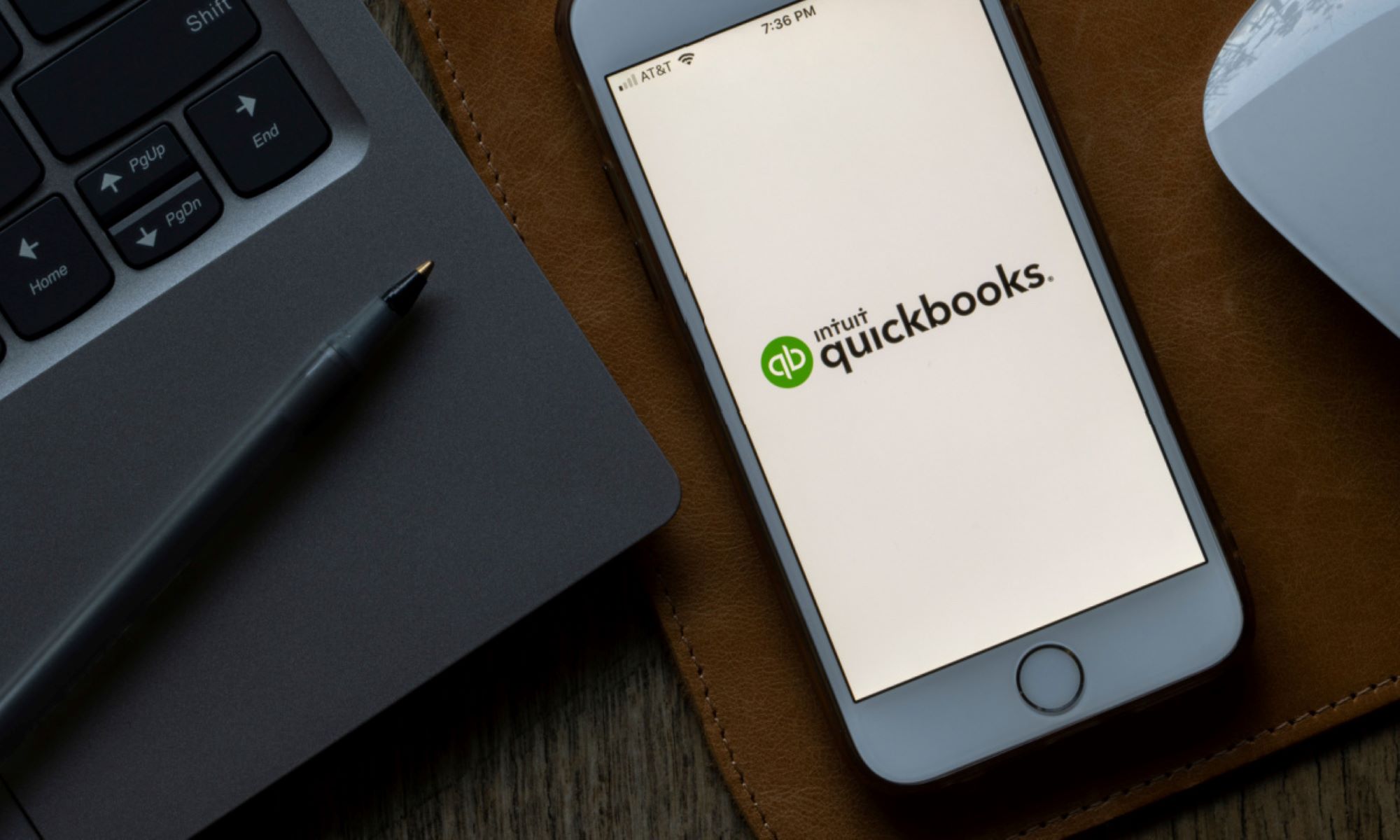Introduction
Upgrading your QuickBooks Desktop software to the latest version is an important step to ensure that you have access to the most up-to-date features and improvements. QuickBooks is an essential tool for businesses, offering powerful accounting and financial management capabilities. Regularly upgrading your software not only enhances productivity but also ensures that you stay current with the latest tax rates, payroll updates, and security patches.
By upgrading to the latest version of QuickBooks Desktop, you can take advantage of enhanced functionality and improved user experience. QuickBooks routinely releases software updates that address bug fixes, performance enhancements, and new features requested by users.
While upgrading your QuickBooks Desktop software may seem like a daunting task, it is a relatively straightforward process. In this article, we will guide you through the steps involved to successfully upgrade your QuickBooks Desktop to the latest version.
We will begin by explaining the benefits of upgrading QuickBooks Desktop and the importance of staying up to date with the latest software version. We will then cover the system requirements for the latest version to ensure compatibility with your computer. It’s crucial to back up your company file before proceeding with the upgrade, and we will provide guidance on how to do this effectively.
Next, we will walk you through the steps to download and install the latest version of QuickBooks Desktop on your computer. We will detail the process of migrating your company file to the new version, ensuring that all of your data is transferred seamlessly.
Activating your upgraded QuickBooks Desktop will be the next step, and we will explain how to do this to ensure uninterrupted access to your accounting and financial data. Furthermore, we will highlight some of the exciting new features and enhancements that you can expect to find in the latest version of QuickBooks Desktop.
Lastly, we will address common issues that may arise during the upgrade process and provide troubleshooting tips to help you overcome any challenges you may encounter.
By the end of this guide, you will have the knowledge and confidence to successfully upgrade your QuickBooks Desktop software to the latest version, empowering you to take full advantage of its capabilities and drive improved efficiency and accuracy in your financial management processes.
Understanding the Benefits of Upgrading QuickBooks Desktop
Upgrading your QuickBooks Desktop software brings a host of benefits that improve efficiency, enhance productivity, and provide a better user experience. Let’s take a closer look at some of the key advantages of upgrading to the latest version:
- Access to New Features: Each new version of QuickBooks Desktop introduces a range of new features and enhancements that can streamline your accounting processes. From improved inventory management to advanced reporting capabilities, upgrading ensures you have access to the latest tools to help you run your business efficiently.
- Enhanced Security: Cybersecurity threats are constantly evolving, and outdated software becomes vulnerable to attacks. Upgrading to the latest version of QuickBooks Desktop ensures you have the most up-to-date security patches and safeguards your financial data against potential risks.
- Improved Performance: With each new release, QuickBooks undergoes performance enhancements to optimize speed and stability. Upgrading to the latest version can result in faster load times, smoother navigation, and improved overall system performance.
- Compliance with Tax Regulations: Tax codes and regulations change regularly, and staying compliant is crucial for businesses of all sizes. QuickBooks Desktop updates include the latest tax rates and payroll updates, ensuring accurate calculations and minimizing the risk of non-compliance.
- Bug Fixes and Error Corrections: QuickBooks periodically releases updates to address software bugs and error corrections. Upgrading to the latest version ensures that you benefit from these fixes, helping to minimize system glitches and potential data inconsistencies.
- Seamless Integration with Third-Party Apps: QuickBooks Desktop integrates with a wide range of third-party applications that can enhance its functionality and tailor it to your specific business needs. By upgrading, you can take advantage of compatibility improvements, allowing you to seamlessly integrate with other software tools.
By understanding the benefits of upgrading QuickBooks Desktop, you can make an informed decision about when and why to upgrade. The latest version of QuickBooks Desktop offers significant improvements in features, security, performance, and compliance, empowering your business with the tools necessary to stay ahead in today’s competitive landscape.
Checking System Requirements for the Latest Version
Prior to upgrading QuickBooks Desktop to the latest version, it is crucial to ensure that your computer meets the necessary system requirements. By verifying compatibility, you can guarantee a smooth installation and optimal performance. Here are the key steps to check the system requirements:
- Review Operating System Compatibility: Check if your operating system (e.g., Windows or macOS) is compatible with the latest version of QuickBooks Desktop. QuickBooks provides specific minimum system requirements for each release, so make sure your operating system meets or exceeds these specifications.
- Assess Hardware Specifications: Evaluate your computer’s hardware specifications, such as the processor (CPU) speed, RAM, and hard disk space. Ensure that your computer meets or exceeds the minimum requirements specified by QuickBooks for the latest version. Having sufficient resources will enable QuickBooks to run smoothly and handle the demands of your business data.
- Verify Internet Connection Speed: QuickBooks Desktop requires an active internet connection for certain features like automatic updates and online banking. Check your internet connection speed to confirm that it meets the suggested minimums for the latest version. A stable and fast internet connection will ensure uninterrupted access to online features and services.
- Consider Compatibility with Other Software: If you use other software programs in conjunction with QuickBooks Desktop, verify that they are compatible with the latest version. This includes any antivirus or firewall software that may be installed on your computer. Incompatibilities can lead to conflicts and hinder the proper functioning of QuickBooks.
By carefully reviewing the system requirements, you can ensure that your computer is ready for the upgrade. If you find that your computer does not meet the minimum requirements, you may need to upgrade your hardware or consider alternative solutions. It is crucial to have a compatible system to experience the full benefits of the latest QuickBooks Desktop version.
Backing Up Your Company File
Before proceeding with the upgrade of QuickBooks Desktop to the latest version, it is essential to create a backup of your company file. Backing up your data ensures that you have a copy of your financial information in case of any unforeseen issues during the upgrade process. Here are the steps to back up your company file:
- Start QuickBooks: Launch QuickBooks Desktop on your computer and open your company file.
- Access the File Menu: Click on the “File” menu located in the top toolbar of QuickBooks.
- Select Backup Company: From the drop-down menu, choose “Create Backup” or “Backup Company.” This will initiate the backup process.
- Choose Backup Location: Select the location where you want to save the backup file. You can choose an external hard drive, USB drive, network drive, or online storage service.
- Specify Backup Options: QuickBooks will provide you with several options for the backup process. You can choose to back up only the company file or include additional data, such as memorized transactions and templates.
- Initiate Backup: Once you have selected the desired backup options, click on the “Backup” or “Start Backup” button to begin the process. QuickBooks will create a backup of your company file and save it to the specified location.
- Verify Backup Completion: After the backup process is complete, QuickBooks will display a confirmation message. It is important to verify that the backup file has been successfully created and stored in the designated location.
Backing up your company file offers a safety net, allowing you to restore your data if any issues occur during the upgrade process. It is recommended to regularly perform backups of your QuickBooks data even when not planning an upgrade, as it protects against data loss caused by hardware failures, viruses, or human error.
Remember to keep your backup files in a secure location, preferably separate from your computer, to minimize the risk of data loss. By following these steps to back up your company file, you can proceed with the QuickBooks Desktop upgrade process with confidence, knowing that your data is safely backed up.
Downloading the Latest Version of QuickBooks Desktop
Once you have confirmed that your system meets the necessary requirements and backed up your company file, you can proceed with the download of the latest version of QuickBooks Desktop. Here are the steps to download the software:
- Log in to your Intuit Account: Visit the official Intuit website and log in to your Intuit Account using your credentials. If you do not have an account, you may need to create one.
- Access the Downloads Section: Look for the “Downloads” or “Product Downloads” section on the Intuit website. Here, you will find a list of available products and versions.
- Choose the Latest Version of QuickBooks Desktop: Select the latest version of QuickBooks Desktop from the list of products. Make sure to choose the appropriate edition, such as Pro, Premier, or Enterprise, based on your business needs.
- Select the Product Year: Depending on the availability, choose the specific year of the latest version you want to download.
- Click on the Download Button: Once you have selected the correct version and year, click on the “Download” button to initiate the download process. The file will be saved to your computer’s default download location, unless specified otherwise.
- Wait for the Download to Complete: The download time will vary depending on your internet connection speed. Ensure that the download is complete before proceeding to the next step.
- Double-Click on the Downloaded File: Locate the downloaded file on your computer and double-click on it to start the installation process. Follow the on-screen prompts to begin the installation.
Downloading the latest version of QuickBooks Desktop ensures that you have access to the most recent features and improvements. It is essential to download the software from the official Intuit website to guarantee its authenticity and security. Avoid downloading QuickBooks from unauthorized sources, as it may pose a risk to your computer’s security and the integrity of your data.
By following these steps, you can successfully download the latest version of QuickBooks Desktop, setting the stage for the installation and upgrade process. Take note of the downloaded file’s location on your computer for easy access during the installation steps.
Installing QuickBooks Desktop on Your Computer
Once you have downloaded the latest version of QuickBooks Desktop, the next step is to install the software on your computer. The installation process is straightforward, and by following these steps, you can get QuickBooks Desktop up and running in no time:
- Locate the Installation File: If you haven’t done so already, locate the installation file on your computer. This is usually in the default download location or the location specified during the download process.
- Double-Click on the Installation File: Double-click on the installation file to begin the installation process. On some systems, you may need to right-click and select “Run as Administrator” to initiate the installation.
- Review the License Agreement: Read and review the license agreement carefully. If you agree to the terms and conditions, click on the checkbox indicating your acceptance.
- Choose the Installation Type: Depending on your preferences and requirements, select the appropriate installation type. QuickBooks gives you the option to choose between Express and Custom Installation. For most users, the Express Installation option is recommended.
- Select the Installation Location: By default, QuickBooks will suggest a location for the installation files. If you wish to change the installation path, click on the “Browse” button and select a different folder or drive.
- Start the Installation: Click on the “Install” or “Next” button to begin the installation process. QuickBooks will start copying the necessary files to your computer and configuring the software.
- Wait for the Installation to Complete: The installation process may take some time. Be patient and let the process complete without interrupting it. QuickBooks will notify you when the installation is finished.
- Activate QuickBooks Desktop: After the installation is complete, QuickBooks will prompt you to activate the software. Follow the on-screen instructions to activate your copy of QuickBooks Desktop. You will need your QuickBooks license and product information for this step.
Once QuickBooks Desktop is installed and activated, you can begin exploring its features and importing your company file. The installation process ensures that all necessary components are in place for a seamless transition to the latest version of QuickBooks Desktop. Ensure that you complete the activation step to avoid any interruptions in using the software.
By following these steps, you can install QuickBooks Desktop on your computer and prepare it for the migration of your company file. This will allow you to take advantage of the updated features and enhancements provided by the latest version of QuickBooks.
Migrating Company File to the Latest Version
After successfully installing the latest version of QuickBooks Desktop, the next crucial step is to migrate your company file to ensure seamless continuity of your financial data. Follow the steps below to migrate your company file:
- Launch QuickBooks Desktop: Open QuickBooks Desktop on your computer using the newly installed version.
- Choose the Migration Option: QuickBooks will prompt you to either create a new company file or migrate an existing one. Select the “Migrate Company File” option to proceed with the migration process.
- Select the Company File to Migrate: Browse your computer’s storage to locate the company file you backed up earlier. Select the file and click on the “Open” button to initiate the migration.
- Review the Migration Details: QuickBooks will present you with important information about the migration process, such as file size, compatibility, and data conversion. Review these details to ensure a smooth migration.
- Confirm the Company File Migration: Once you’ve reviewed the migration information, click on the “Start Migration” or “Next” button to begin the process. QuickBooks will convert and migrate your existing company file to the latest version.
- Wait for the Migration to Complete: The migration process duration depends on the size of your company file. Allow QuickBooks Desktop sufficient time to complete the migration without interruption. Once finished, QuickBooks will notify you that the migration is complete.
- Review the Migrated Company File: Open your migrated company file in QuickBooks Desktop to verify that all data has been successfully transferred. Confirm that all accounts, transactions, customers, vendors, and other critical information are intact.
- Run Reports and Verify Accuracy: To ensure the integrity of your migrated data, generate a few key reports and verify that the information is accurate. Check financial statements, accounts receivable/payable, inventory, and other relevant reports to identify any discrepancies.
By following these steps, you can effectively migrate your company file to the latest version of QuickBooks Desktop. It is advisable to thoroughly review the migrated data to ensure accuracy and address any potential issues promptly. If you encounter any problems during the migration process, consult the QuickBooks support resources or seek assistance from a qualified professional.
Once your company file has been successfully migrated, you can proceed to activate QuickBooks Desktop and begin utilizing the updated features and enhancements available in the latest version. Remember to keep a backup of the migrated company file to safeguard your financial data.
Activating QuickBooks Desktop
After installing and migrating your company file to the latest version of QuickBooks Desktop, the final step is to activate the software. Activating QuickBooks ensures that you can continue using the software without any interruptions. Follow these steps to activate QuickBooks Desktop successfully:
- Launch QuickBooks Desktop: Open QuickBooks Desktop on your computer using the installed version.
- Check for Activation Prompt: QuickBooks will prompt you to activate the software automatically. If you don’t see the activation prompt, go to the “Help” menu and select the “Activate QuickBooks” option.
- Verify Your License Information: QuickBooks will display the License and Product Information screen. Verify that the displayed information matches your purchased license. If not, enter your license information manually.
- Choose the Activation Method: QuickBooks provides two activation methods: online and by phone. Select the appropriate method based on your preference and internet connectivity.
- Online Activation: If you have an active internet connection, choose the “Automatic” option for online activation. QuickBooks will connect to the server, verify your license information, and activate the software automatically.
- Activation by Phone: If you prefer to activate by phone, select the “Phone” option. QuickBooks will provide a phone number and the unique product number required for the activation. Follow the phone prompts to complete the activation process.
- Confirmation of Activation: Once the activation process is complete, QuickBooks will display a confirmation message indicating successful activation. This confirms that you can now use QuickBooks Desktop with all its features.
- Run QuickBooks Desktop: Close and relaunch QuickBooks Desktop to ensure that the activation process has been applied. QuickBooks should now open without any activation prompts.
Activating QuickBooks Desktop enables you to continue using the software and access all its functionalities. It is crucial to activate the software to ensure uninterrupted use and compliance with licensing agreements.
If you encounter any issues during the activation process or need further assistance, consult the QuickBooks support resources or contact their customer support for guidance. Having QuickBooks Desktop activated ensures that you can continue using the software to efficiently manage your financial data and processes.
Exploring New Features and Enhancements
By upgrading to the latest version of QuickBooks Desktop, you gain access to a range of new features and enhancements designed to improve your workflow and streamline your financial management processes. Let’s take a closer look at some of the exciting updates you can expect in the latest version:
- Improved User Interface: QuickBooks Desktop often introduces an updated and intuitive user interface with each new version. You may find a more visually appealing and user-friendly experience, making navigation and finding features easier.
- Enhanced Reporting Capabilities: The latest version of QuickBooks Desktop may introduce new report templates and customization options, allowing you to generate more insightful reports tailored to your business’s specific needs.
- Advanced Inventory Management: Depending on the edition and version, QuickBooks Desktop may offer enhanced inventory management features. These may include batch scanning, serialized inventory tracking, and improved inventory reports.
- Streamlined Banking Functions: Updates to QuickBooks Desktop often bring improvements to bank reconciliation, enabling you to reconcile your accounts more accurately and efficiently. You may also benefit from enhanced bank feeds, allowing for easier transaction matching and categorization.
- Integrations with Third-Party Applications: QuickBooks Desktop frequently expands its list of integrations with popular third-party applications. These integrations allow for seamless synchronization of data and improve productivity by enhancing collaboration between different platforms.
- Automation and Workflow Enhancements: The latest version may introduce workflow enhancements and automation features that simplify repetitive tasks. This can save you time and improve overall efficiency in managing your financial processes.
- Improved Payment Processing: QuickBooks Desktop updates often bring enhancements to payment processing, making it easier for your business to send and receive payments. This may include expanded payment options, improved invoicing features, and integration with popular payment gateways.
- Compliance Updates: With each new version, QuickBooks Desktop incorporates updated tax rates, payroll changes, and other compliance-related updates to ensure that your financial calculations and reporting remain accurate and up to date.
Exploring and familiarizing yourself with the new features and enhancements in the latest version of QuickBooks Desktop allows you to leverage the software to its fullest potential. Take the time to explore these updates, read documentation, and seek training if needed to make the most of the tools available.
Remember to regularly check for new updates and releases from QuickBooks. As technology advances and business needs evolve, QuickBooks Desktop continues to innovate and provide ongoing updates to improve its functionality and address user feedback.
Troubleshooting Common Upgrade Issues
While upgrading QuickBooks Desktop to the latest version is generally a smooth process, you may encounter some common issues along the way. Understanding these issues and knowing how to troubleshoot them can help ensure a successful upgrade. Here are some common upgrade issues and possible solutions:
- Compatibility Issues: Before upgrading, ensure that your computer meets the system requirements for the latest version of QuickBooks Desktop. If you encounter compatibility issues, you may need to upgrade your hardware or operating system.
- Installation Errors: If you encounter errors during the installation process, try running the installation file as an administrator or disabling antivirus software temporarily. You can also try downloading the installation file again or using a different source.
- Data File Migration Problems: If you experience difficulties migrating your company file, make sure the file is not corrupt or damaged. Verify that the file is in the correct format and compatible with the latest version of QuickBooks Desktop. If necessary, seek assistance from QuickBooks support for file repair or data conversion.
- Activation Issues: If you encounter problems activating QuickBooks Desktop, double-check that you have entered the correct license and product information. Ensure that your internet connection is stable if you choose online activation. If activation by phone is required, follow the instructions carefully and verify that you have dialed the correct phone number.
- Performance or Slowness: If you notice sluggish performance or slow response after the upgrade, check if your computer meets the minimum hardware requirements for the latest version. You can also try optimizing your computer’s performance by closing unnecessary programs or disabling startup items.
- Incompatibility with Add-ons: If you use third-party add-ons or plugins with QuickBooks Desktop, some of them may not be compatible with the latest version. Check with the add-on provider for updates or compatibility information and install the compatible version if available.
- Data Loss: While uncommon, there is always a risk of data loss during the upgrade process. To minimize this risk, make sure to back up your company file before starting the upgrade. If data loss occurs, contact QuickBooks support or consult with a data recovery specialist.
If you encounter any issues during the upgrade process that you cannot resolve, it is recommended to reach out to QuickBooks support for assistance. They can provide specific troubleshooting steps based on your situation or guide you through resolving common upgrade issues.
Remember to exercise caution and patience during the upgrade process. Taking preventive measures, such as backing up your data and ensuring compatibility, can help minimize the chances of encountering problems during the upgrade.
Conclusion
Upgrading your QuickBooks Desktop software to the latest version is a crucial step in staying current with the latest features, enhancements, and compliance updates. It allows you to optimize your financial management processes, improve efficiency, and take advantage of the most up-to-date tools and functionalities.
In this guide, we have explored the importance of upgrading QuickBooks Desktop and the benefits it brings. We discussed how to check system requirements, back up your company file, download the latest version, install the software on your computer, migrate your company file, and activate QuickBooks Desktop. Additionally, we highlighted the significance of exploring new features and troubleshooting common issues that may arise during the upgrade process.
Remember to always check for updates and new releases from QuickBooks Desktop to ensure that you have the latest software version. Regularly backing up your data and verifying system compatibility are crucial steps to safeguard your financial information and ensure a smooth upgrade process.
By following the steps outlined in this guide and staying proactive, you can successfully upgrade to the latest version of QuickBooks Desktop and reap the benefits of enhanced functionality, increased security, improved performance, and compliance with the latest tax regulations.
Should you encounter any challenges or require further assistance during the upgrade process, rely on the resources provided by QuickBooks support. They are available to help you resolve any issues and navigate through the upgrade successfully.
Embrace the opportunity to upgrade and unlock the full potential of QuickBooks Desktop, enabling you to manage your finances more effectively and focus on growing your business.

























